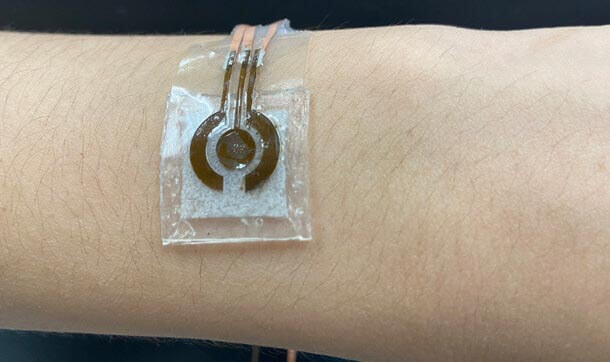With their ability to provide real-time glucose readings and eliminate the need for frequent fingerstick assessments, continuous glucose monitors, or CGMs, have revolutionized the treatment of diabetes. However, a tiny sensor needle must still be inserted into the skin to use a traditional CGM. Despite being minimally intrusive, some users have found this needle requirement to be unsettling due to the discomfort and potential for skin irritation. An exciting new development in CGM technology is the introduction of wearable Continuous Glucose Monitors or CGMs without needles.
The Development of CGM Technology
Since their introduction, Continuous Glucose Monitors, or CGMs have advanced significantly. The early devices had intrusive sensor insertions, were heavy, and needed frequent calibration. Progress over time has resulted in gadgets that are more compact, precise, and easy to operate. The requirement to implant the sensor with a needle has persisted despite these advancements.
Announcing CGMs Without Needles
The creation of Continuous Glucose Monitors or CGMs without needles is the most recent advancement in the field of glucose monitoring. These gadgets seek to do away with the requirement for skin-intrusive sensor insertion, providing a fully non-invasive way to continuously check glucose levels. This innovation increases user comfort while also increasing the attractiveness and accessibility of CGMs.
How Needle-Free CGMs Operate
To measure glucose levels, needle-free Continuous Glucose Monitors or CGMs make use of different technologies. Among the encouraging methods are the following:
Optical Sensors
These sensors gauge glucose levels by using light. These devices use the properties of glucose molecules’ light absorption to determine glucose concentrations by shining a light through the skin. For this reason, technologies including near-infrared and Raman spectroscopy are being investigated.
Transdermal Sensors
These gadgets test blood sugar levels without breaking through the skin. They employ methods like reverse iontophoresis, which entails bringing glucose molecules to the skin’s surface for measurement through a little electrical current.
Electromagnetic Sensing
This technique measures glucose levels by utilizing electromagnetic fields. These sensors measure glucose accurately by examining the interaction between electromagnetic waves and glucose molecules.
Benefits of Continuous Glucose Monitors Without Needles
The introduction of CGMs without needles has several important advantages:
Enhanced Comfort
For youngsters and those who are afraid of needles, the removal of the needle requirement greatly improves user comfort, making glucose monitoring less scary and more alluring.
Lower Risk of Skin Irritation
As there is no requirement to implant a sensor beneath the skin, there is less chance of discomfort, infection, and allergic reactions.
Ease of Use
The use of needle-free CGMs makes glucose monitoring easier. The gadget is simple to apply and remove for users, requiring no additional help or training.
Expanding Accessibility
By enhancing the comfort and ease of use of Continuous Glucose Monitors or CGMs, a larger group of people—including those who are presently put off by the intrusive nature of conventional CGMs—can use these devices.
Explore More Can I Share My Continuous Glucose Monitors Data with Others?
Possible Difficulties and Things to Take Into Account
Despite the encouraging benefits, several issues with needle-free Continuous Glucose Monitors or CGMs require attention:
Accuracy and Reliability
It is imperative to guarantee that glucose readings from needle-free CGMs are as precise and dependable as those from conventional Continuous Glucose Monitors or CGMs. This will only be possible with constant improvements in sensor technology and thorough clinical trials.
Regulatory Approval
Getting innovative medical devices approved by the government can be a difficult and drawn-out procedure. Before being commercially available, needle-free CGMs must pass rigorous testing to prove their efficacy and safety.
Cost
The use of cutting-edge technologies in the development and production of needle-free CGMs may initially result in greater expenses. However, prices should rise in response to the realization of economies of scale and the maturation of technology.
Battery Life and Durability
For customer comfort and satisfaction, it is crucial to guarantee that needle-free CGMs have enough battery life and durability for continuous wear.
Glucose Monitoring’s Future
The development of glucose monitoring technology has reached a major turning point with the advent of needle-free CGMs. These gadgets should become more precise, dependable, and reasonably priced as research and development continue. Further increasing the usefulness of these CGMs is the possibility of integrating them with other health monitoring systems and digital health platforms.
Real-World Applications
CGMs without needles have the power to completely transform preventive healthcare and diabetes treatment. These gadgets can make it easier and more comfortable for diabetics to check their blood sugar levels, which can increase glycemic control and enhance adherence to regimens.
Non-diabetics can utilize needle-free CGMs to learn more about their metabolic health in addition to managing their diabetes. For example, athletes can use these gadgets to track their blood sugar levels during training and improve their diet and overall performance. In a similar vein, those who are interested in preventative health can utilize needle-free CGMs to detect swings in blood sugar and modify their lifestyle to lower their chance of developing metabolic illnesses.
In Summary
The development of CGMs without needles is a revolutionary development in the field of glucose monitoring. These devices are more user-friendly, provide better comfort, and lower the chance of skin irritation by doing away with the necessity for needle insertion. Although maintaining accuracy, getting regulatory permission, and controlling expenses continue to be difficult tasks, there are significant potential advantages.
Needle-free CGMs have the potential to revolutionize diabetes care and advance metabolic health more broadly as technology advances. Needless to say, the future of glucose monitoring seems bright, with needle-free CGMs opening the door to a more accessible, comfortable, and user-friendly method of controlling and comprehending blood sugar levels.


